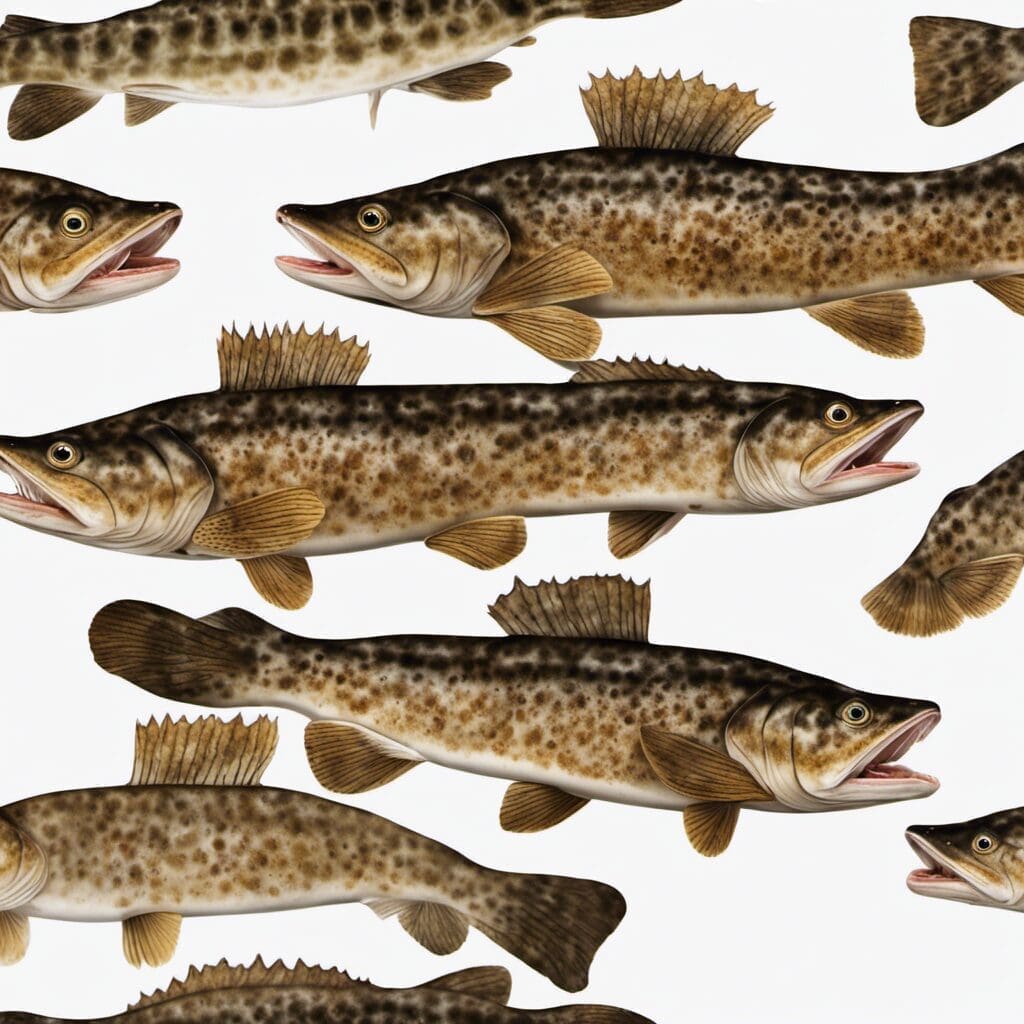Introduction
The Burbot (Lota lota) is a potent, often overlooked member of the Cod family (Gadidae), known for its distinct elongated body shape and a characteristic ‘barbel’, a whisker-like sensory organ near its mouth. Recreational fishermen cherish it for its resistance and the cooking value of its meat.
Conservation Status
According to the International Union for Conservation of Nature (IUCN), the Burbot falls under the ‘Least Concern’ category regarding its conservation status. Various conservation organizations and government bodies work to maintain habitats and supervise fishing activities to ensure sustainable populations.
Statistics
| Length (Average) | Length (Range) | Weight (Average) | Weight (Range) | Average Lifespan |
|---|---|---|---|---|
| 60 cm | 40 – 120 cm | 1 – 2 kg | 0.3 – 14 kg | 10 – 15 years |
Distribution
The Burbot boasts widespread distribution across North America and Europe, inhabiting deep, cold waters. Migration patterns are influenced by water temperatures and food availability, leading them to migrate to shallower waters during winter spawning.
Habitats
- Water Type: Freshwater and Brackish Waters
- Depth Range: 6 – 300 m
- Temperature Range: 1 – 15 °C, with an optimal range of 6-10 °C.
When and Where to See
The Burbot is a winter spawner, thus anglers have higher chances of spotting them in colder months. The best time to fish for Burbot is usually at dusk or dawn.
Best Fishing Locations
Some of the best fishing locations for Burbot include:
- Lake Geneva, Switzerland/France
- Lake of Woods, Minnesota/Manitoba/Ontario
- Lake Ladoga, Russia
- Great Slave Lake, Northwest Territories, Canada
- Lake Baikal, Russia
- Fish Lake, Utah
- Loch Ness, Scotland
- Mille Lacs Lake, Minnesota
- Dal Lake, Indian Himalayas
- Lake Champlain, Vermont/New York
How to Catch
The preferred bait for burbot includes small fish species such as minnows and worms. Techniques such as jigging, bottom fishing, and ice fishing in winter are highly effective. Night-time fishing in colder months yields the best results.
Identification Guide
Burbot can be identified by their elongated, eel-like body, single barbel on chin, two dorsal fins (one short and one long), and mottled green/brown coloration. The Burbot is easily distinguishable from similar species due to its unique ‘chin whisker’.
Culinary Notes
Burbot’s meat is mild and dense with a flavor akin to lobster when cooked. It is often used in soups, stews, and can even be boiled or fried. Due to its nutritional composition, it provides significant amounts of proteins, vitamins, and healthy fatty acids.
Additional Information
Feeding habits of Burbot primarily include small fish and invertebrates. Natural predators include larger piscivorous fish and birds. Historically, the species was often associated with supernatural qualities in traditional folklore across various cultures.
References and Further Reading
Additional information on the Burbot can be obtained from:
- FishBase
- IUCN Red List
- NatureGate

